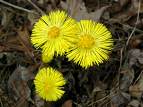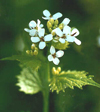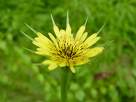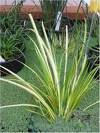Wild Flowers of Whiteknights by Renee Grayer
In the late 18th and early 19th century the gardens of the Whiteknights Estate were among the most famous in the South of England, as they were laid out with rare plants and trees from the colonies by the Marquess of Blandford. In 1867 the estate was divided into six leaseholds, which caused a lot of changes, but fortunately the lake and the woodlands of the "Wilderness" remained. Many of the unusual trees still survive and the Rhododendrons which were planted in the 19th century have spread through large areas of the Wilderness. However, most of the cultivated plants have long gone and wildflowers have taken their place. I have studied these from 1975 onwards when we moved into the area. There are several different habitats such as woodland, meadows and wet areas, so that there is a wide variety of plants. Below I will list some of the more unusual or interesting species.
As early as February or March the first flowers of Coltsfoot appear in muddy areas around the lake. They are yellow and look like small dandelions,  but they do not have leaves at this time of the year. These appear after the flowers have gone and have the shape of a horseshoe, hence the name of this species. A related plant is Butterbur, which also grows in wet places and flowers in late winter along the lake near the small bridge in the Wilderness. It has large inflorescences of pinkish daisy-like flowers, and the leaves, which appear later in the season, have the same shape as those of Coltsfoot, but are much bigger and almost like rhubarb leaves. but they do not have leaves at this time of the year. These appear after the flowers have gone and have the shape of a horseshoe, hence the name of this species. A related plant is Butterbur, which also grows in wet places and flowers in late winter along the lake near the small bridge in the Wilderness. It has large inflorescences of pinkish daisy-like flowers, and the leaves, which appear later in the season, have the same shape as those of Coltsfoot, but are much bigger and almost like rhubarb leaves.
Some fifteen years ago Daffodil bulbs were planted along the main path in the Wilderness, and although they are not wild flowers, it is still nice to see them all fully in bloom under the trees in early spring. The end of April is the time that Garlic Mustard and Bluebells start flowering.  Both can be found in the woods, especially in the botanic garden, but also in the grass next to the outside fence of the University along Pepper Lane, from the botanic garden to the boiler house entrance. Garlic Mustard with its small white flowers belongs to the cabbage family, but smells like onions. It is the food plant of the orange tip butterfly. At this time of the year you can also see the unusual inflorescence of Cuckoo-pint or Lords-and-ladies in the woods. The green bract or "spathe" around the fleshy purple flower spike or "spadix" traps insects until they have pollinated the flowers. Later in the year the beautiful fruits appear, which look like red sweetcorn cobs. Both can be found in the woods, especially in the botanic garden, but also in the grass next to the outside fence of the University along Pepper Lane, from the botanic garden to the boiler house entrance. Garlic Mustard with its small white flowers belongs to the cabbage family, but smells like onions. It is the food plant of the orange tip butterfly. At this time of the year you can also see the unusual inflorescence of Cuckoo-pint or Lords-and-ladies in the woods. The green bract or "spathe" around the fleshy purple flower spike or "spadix" traps insects until they have pollinated the flowers. Later in the year the beautiful fruits appear, which look like red sweetcorn cobs.
 At the end of May or beginning of June Yellow Flag starts flowering in several places around the lake. It is one of our native irises and is as big and showy as a garden plant. At the end of May or beginning of June Yellow Flag starts flowering in several places around the lake. It is one of our native irises and is as big and showy as a garden plant.  Another beautiful native plant at this time of the year is Goatsbeard, which has yellow star-like flowers. They can be admired in the meadows along the path from the lake to Bridges Hall, but only in the morning as the flowers are closed in the afternoon. Hence this species is also called "Jack-goes-to-bed-at-noon". Another beautiful native plant at this time of the year is Goatsbeard, which has yellow star-like flowers. They can be admired in the meadows along the path from the lake to Bridges Hall, but only in the morning as the flowers are closed in the afternoon. Hence this species is also called "Jack-goes-to-bed-at-noon".
 Along the path to the Plant Science Labs there are several clumps of Field Madder, which has very small but pretty pink flowers in June. This unusual species is related to the more common Ladies Bedstraw, which has yellow flowers and can be seen in the meadows behind the grotto in the Wilderness. In the summer this meadow is also full of the purple flowers of Knapweed. Along the path to the Plant Science Labs there are several clumps of Field Madder, which has very small but pretty pink flowers in June. This unusual species is related to the more common Ladies Bedstraw, which has yellow flowers and can be seen in the meadows behind the grotto in the Wilderness. In the summer this meadow is also full of the purple flowers of Knapweed.
A water plant which is common in Berkshire and surrounding counties,  but rare in other areas of the UK, is the toxic Hemlock Water Dropwort. It grows around the lake in Whiteknights and in some of the wet meadows. It has big parsley-like leaves and inflorescences, and big white poisonous taproots which look like fingers. There are reports that these roots killed cattle when they ate them and therefore the plant used to be called "five-finger death" by farmers. but rare in other areas of the UK, is the toxic Hemlock Water Dropwort. It grows around the lake in Whiteknights and in some of the wet meadows. It has big parsley-like leaves and inflorescences, and big white poisonous taproots which look like fingers. There are reports that these roots killed cattle when they ate them and therefore the plant used to be called "five-finger death" by farmers.
A parasitic native species, Common Broomrape, occurs in some of the flowerbeds of the Earley Gate buildings. It does not produce chlorophyll and therefore has no green pigment. It has, however, unusual purplish flowers.
A non-native species flowering along the main path in the Wilderness in the summer is Small Yellow Balsam.  This plant is related to the much more common Indian Balsam or Policeman's Helmet, which is sweet-smelling and has pretty pink flowers. However, it is a wolf in sheep's clothing, as this non-native species is terribly invasive and has spread everywhere around the lake in Whiteknights and indeed elsewhere along lakes and streams in the UK, pushing out the native plants. When you touch the ripe fruits of both balsam species, the seeds jump out with an enormous speed, and this efficient seed dispersal is one of the reasons why these species have spread so widely. This plant is related to the much more common Indian Balsam or Policeman's Helmet, which is sweet-smelling and has pretty pink flowers. However, it is a wolf in sheep's clothing, as this non-native species is terribly invasive and has spread everywhere around the lake in Whiteknights and indeed elsewhere along lakes and streams in the UK, pushing out the native plants. When you touch the ripe fruits of both balsam species, the seeds jump out with an enormous speed, and this efficient seed dispersal is one of the reasons why these species have spread so widely.
At the end of the summer two rather rare wildflowers can be seen in the wet meadows along the path from the lake to the Senior Common Room,  Sneezewort with small white daisy-like flowers and Pepper Saxifrage (not related to true saxifrages) with yellowish umbels. Late summer is also the time to look at Sneezewort with small white daisy-like flowers and Pepper Saxifrage (not related to true saxifrages) with yellowish umbels. Late summer is also the time to look at  the water plants at the north end of the lake near Whiteknights Road. There are many different and beautiful species growing along the dam and in the water, the most interesting of which are probably Skullcap, Bur-marigold, Water Figwort and Sweet Flag. Skullcap has two-lipped flowers of a very intensive colour blue, Bur-marigold has daisy-like flowers with small orange-yellow petals and a large brown centre, whereas Water Figwort has small shiny dark-red two-lipped flowers. Sweet Flag is related to the cuckoo-pint, and sometimes the whitish fleshy flower spikes can be seen, held at an angle of 45º. The leaves look like those of yellow flag, but they have wavy edges. the water plants at the north end of the lake near Whiteknights Road. There are many different and beautiful species growing along the dam and in the water, the most interesting of which are probably Skullcap, Bur-marigold, Water Figwort and Sweet Flag. Skullcap has two-lipped flowers of a very intensive colour blue, Bur-marigold has daisy-like flowers with small orange-yellow petals and a large brown centre, whereas Water Figwort has small shiny dark-red two-lipped flowers. Sweet Flag is related to the cuckoo-pint, and sometimes the whitish fleshy flower spikes can be seen, held at an angle of 45º. The leaves look like those of yellow flag, but they have wavy edges.
Many thanks to Renee Grayer for this article
|